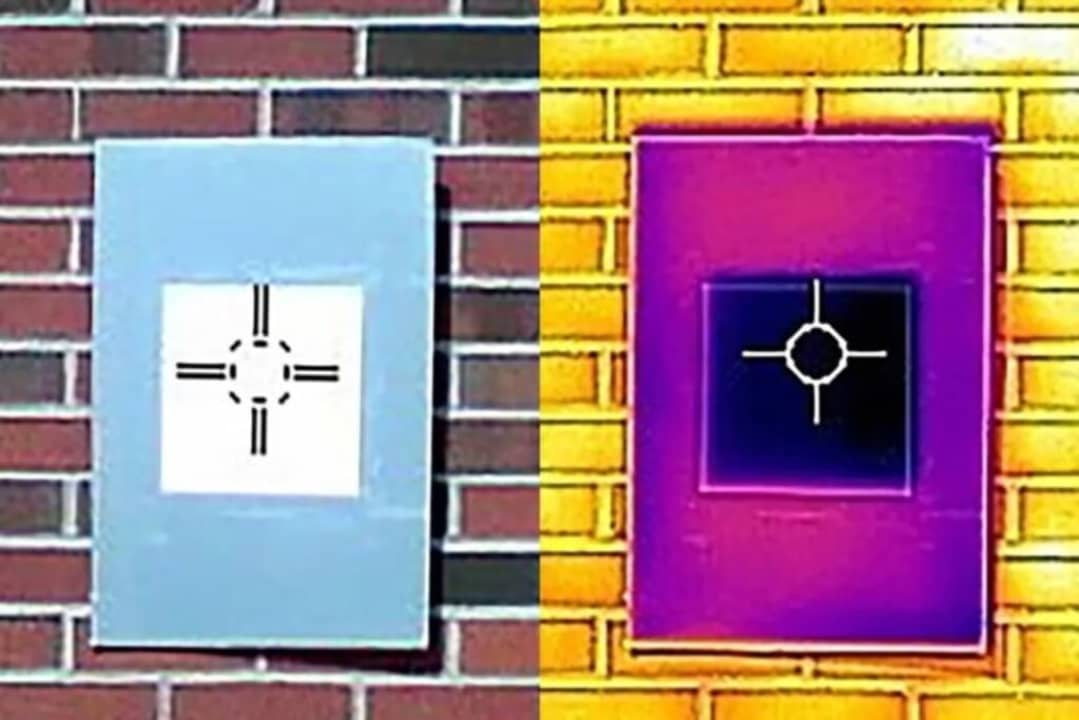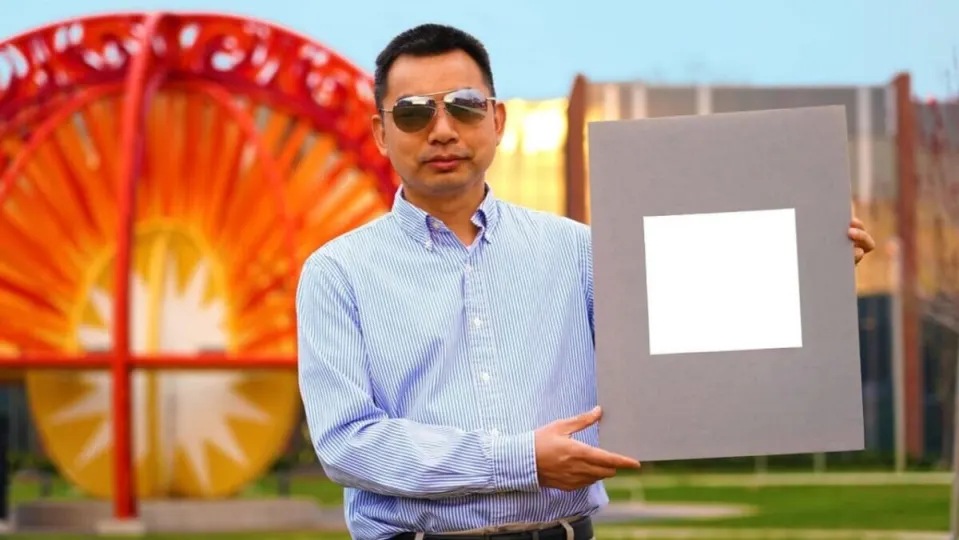As the planet inexorably heats up, many scientists are working to halt this increase in temperatures. And there are many ways to do it, from renewable energies… to paints.
Xiulin Ruan, a professor of mechanical engineering at Purdue University, had more ambitious goals in mind than just entering the Guinness World Records when he began developing a new type of paint. His objective was to cool buildings without the need for air conditioning.
In 2020, Ruan and his team unveiled their creation: a type of white paint that acts as a reflector, bouncing 95% of the sunlight away from the Earth’s surface, through the atmosphere, and into deep space.
A paint that reflects almost 100% of the sun’s rays
The properties of this paint are almost unreal. It can make surfaces up to 13 degrees Celsius cooler than the ambient temperature at noon when exposed to sunlight, reducing indoor building temperatures and air conditioning needs by up to 40% in some cases.
According to Dr. Ruan, it feels cool to the touch, even under scorching sunlight. Unlike air conditioners, the paint requires no energy to function and does not heat up the surrounding air.
Currently, the Purdue team has achieved a solar reflection rate of 98%. In other words, it sends almost all the sun’s heat back into deep space.
In 2021, Guinness declared it the whitest paint in history, and since then, it has received several awards. While originally designed for rooftops, manufacturers of clothing, shoes, cars, trucks, and even spacecraft have shown great interest.
Last year, Ruan and his team announced that they had created a lighter version of the paint capable of reflecting heat from vehicles.

A very white paint that is not a danger to space
Although the paint is officially the whitest in the world, it is not blinding because it scatters light, explains Ruan. Its appearance is not much different from regular white paint found in hardware stores.
It will take at least another year for the paint to be ready for commercial use, and efforts are being made to increase its durability and resistance to dirt. The team is also working on developing colored paints that use the ultrawhite paint as a base.
As the climate crisis worsens, scientists are urgently working on the development of reflective materials, including various types of coatings and films, that could passively cool the Earth.
The materials are based on physical principles that allow thermal energy to travel from the Earth in specific wavelengths through what is known as the transparency or atmospheric window, reaching deep space.
Jeremy Munday, a professor of electrical and computer engineering at the University of California, Davis, who researches clean technology, states that this redirection would have minimal impact on space.
The sun already emits more than a billion times more heat than the Earth, he said, and this method is limited to reflecting the heat already generated by the sun. “It would be like pouring a glass of water into the ocean,” explains Dr. Munday.
He calculated that if materials like Purdue’s ultrawhite paint covered between 1% and 2% of the Earth’s surface, slightly over half the size of the Sahara, the planet would stop absorbing more heat than it emits, and global temperatures would cease to rise.
It is not a solution against Climate Change, just a stopgap
Ruan explains that standard commercial white paints usually reflect between 80% and 90% of solar radiation. This means they still absorb between 10% and 20% of the heat, which, in turn, heats up the surfaces and the surrounding air.
In comparison, Purdue’s ultrawhite paint absorbs much less solar heat and radiates much more heat into deep space, effectively cooling the surfaces to temperatures below ambient levels.
However, there are reasons for concern. The standard version of Purdue’s ultrawhite paint uses barium sulfate, which needs to be extracted from mines, increasing its carbon footprint. Still, Dr. Ruan pointed out that titanium dioxide, used in the vast majority of commercial paints, also requires mining.
Geoengineering – the manipulation of various processes to control the Earth’s climate – has also faced criticism for diverting attention from the root problem: humans must stop burning fossil fuels to avoid more catastrophic effects of climate change.
“It’s definitely not a long-term solution to the climate problem,” said Dr. Munday. “It’s something that can be done in the short term to mitigate worse problems while trying to get everything under control.”
Some of the links added in the article are part of affiliate campaigns and may represent benefits for Softonic.


